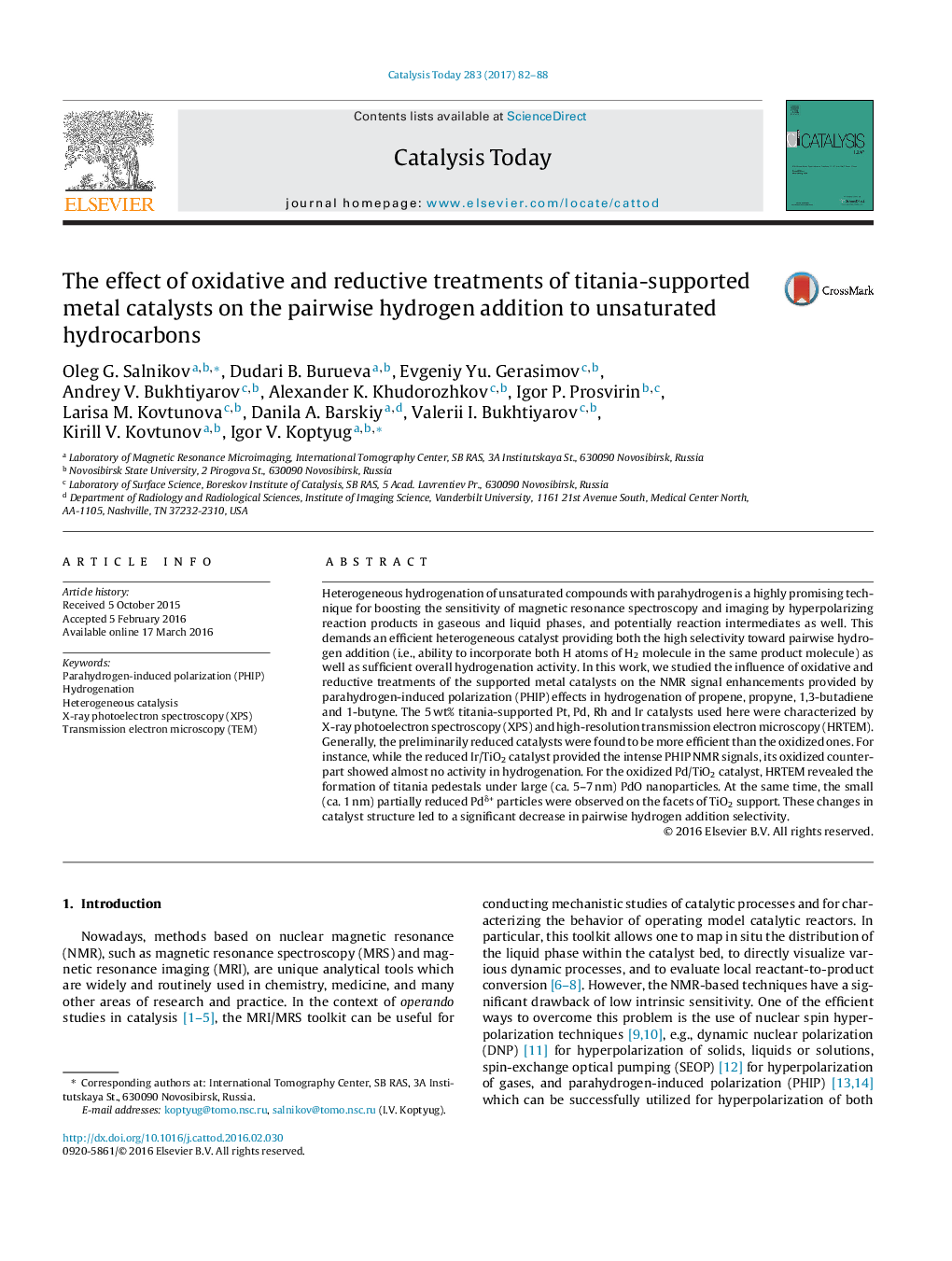| کد مقاله | کد نشریه | سال انتشار | مقاله انگلیسی | نسخه تمام متن |
|---|---|---|---|---|
| 6455263 | 1419172 | 2017 | 7 صفحه PDF | دانلود رایگان |
- We address parahydrogen-induced polarization (PHIP) in heterogeneous hydrogenations.
- Titania-supported metal catalysts with oxidative and reductive pretreatments are used.
- Reduced catalysts are more efficient than the oxidized ones in producing PHIP effects.
Heterogeneous hydrogenation of unsaturated compounds with parahydrogen is a highly promising technique for boosting the sensitivity of magnetic resonance spectroscopy and imaging by hyperpolarizing reaction products in gaseous and liquid phases, and potentially reaction intermediates as well. This demands an efficient heterogeneous catalyst providing both the high selectivity toward pairwise hydrogen addition (i.e., ability to incorporate both H atoms of H2 molecule in the same product molecule) as well as sufficient overall hydrogenation activity. In this work, we studied the influence of oxidative and reductive treatments of the supported metal catalysts on the NMR signal enhancements provided by parahydrogen-induced polarization (PHIP) effects in hydrogenation of propene, propyne, 1,3-butadiene and 1-butyne. The 5 wt% titania-supported Pt, Pd, Rh and Ir catalysts used here were characterized by X-ray photoelectron spectroscopy (XPS) and high-resolution transmission electron microscopy (HRTEM). Generally, the preliminarily reduced catalysts were found to be more efficient than the oxidized ones. For instance, while the reduced Ir/TiO2 catalyst provided the intense PHIP NMR signals, its oxidized counterpart showed almost no activity in hydrogenation. For the oxidized Pd/TiO2 catalyst, HRTEM revealed the formation of titania pedestals under large (ca. 5-7 nm) PdO nanoparticles. At the same time, the small (ca. 1 nm) partially reduced Pdδ+ particles were observed on the facets of TiO2 support. These changes in catalyst structure led to a significant decrease in pairwise hydrogen addition selectivity.
205
Journal: Catalysis Today - Volume 283, 1 April 2017, Pages 82-88
